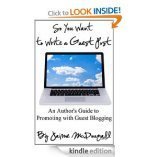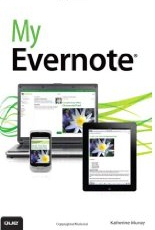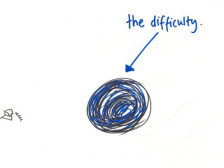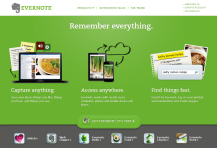Jacqui Murray's Blog, page 187
June 22, 2012
Book Review: So You Want to Write a Guest Post

Writing the guest post
So You Want to Write a Guest Post: An Author’s Guide to Promoting with Guest Blogging (Smashwords 2011) is Jaime McDougall’s first book in her fascinating series on self-marketing for busy writers. I do a lot of blogging as well as guest posts, and was interested in how McDougall’s advice compared to my experiences.
First, a bit of background. I’m webmaster for six blogs, everything from science to writing to technology. I also write monthly columns for four ezines/blogs. McDougall is an Australian writer–though her bio calls her a ‘citizen of the world’–who runs an online book marketing company and has herself written for a variety of journalistic outlets.
Writing for someone else is a different experience than your own blogs and websites. Think about going to dinner at a friend’s house. Maybe they serve salad with dinner instead of before. Maybe there’s no salt shaker there–or ash tray. Maybe they play hip-hop artist where you have none, preferring the music of voices. Whatever the differences, you accept them and make them part of the experience. Guest blogging is similar. Between the intro from the webmaster to the presence of ads (a perennial problem with my Examiner articles), you have no say over the layout and delivery of your post.
You’re a guest.
Here are my thoughts on McDougall’s 24-page book:
Table of Contents provides a thorough overview of the book’s contents. I always read these to see if I want to go further. In this case, I did
Find guest post opportunities among friends, blogger directories, book tours, even a simple Google research on ‘blogs’ in your genre. I usually stick to ‘friends’, but when building creds, McDougall offers many more options
There’s overlap between this ebook and McDougall’s ebook on book tours. No problem with that–just mentioning.
The ‘average’ length for a guest blog is 250-500 words. Many people break that rule, so don’t worry about it.
Self-promote judiciously:
Just as there are three parts to any good post – a beginning, middle and end – the most you will want to mention your book by title is three times (not including your biography)
I’m so glad she discusses the blog title. This may be the single most important part of the post
I like that she reminds bloggers to gear a post to the theme of the host’s blog.
Don’t reuse a post–except on your own blog.
Nice inclusion of sample great guest posts.
Overall, this is a good overview, but all opinion. No statistics to back up statements. No discussion of the value of guest posts (beyond the perceived value). Are they worth the time for writers? Do they accomplish what writers think they do–increase visibility? Sure, the author’s words are in one more location, but does that make a difference?
I was disappointed in the list of guest post ideas. They were primarily personal–’5 Things I can’t write about’, ‘Research that went into writing my book’. These are human interest, but a lot of topics that draw an audience are more substantive. How about the future of publishing, how to publish in Smashwords, how to make money as a writer? And, McDougall’s topics assume the guest poster writes fiction. While non-fiction writers can also address personal topics–especially if they’re a famous musician or artist–unknown authors are better served to address pithy topics related to their book’s content that share their expertise. For example, I write technology books for elementary school and solicit guest post topics like how teachers use keyboarding in the classroom.
My conclusion: This is a good first effort for McDougall. She intimates that this book will be more appealing to writers who 1) have made up their mind that guest posting is part of their marketing toolkit, and 2), have no experience guest blogging than those looking to improve their craft. I think this is true.
_____________________________________________________________________________________________________________
Jacqui Murray is the editor of a technology curriculum for K-sixth grade, creator of two technology training books for middle school and three ebooks on technology in education. She is the author of Building a Midshipman , the story of her daughter’s journey from high school to United States Naval Academy midshipman. She is webmaster for six blogs, an Amazon Vine Voice book reviewer, a columnist for Examiner.com , Editorial Review Board member for Journal for Computing Teachers, IMS tech expert, and a weekly contributor to Write Anything. Currently, she’s editing a thriller for her agent that should be out to publishers this summer. Contact Jacqui at her writing office or her tech lab, Ask a Tech Teacher.
Filed under: blogs, Book contests, business Tagged: book review, guest posts

June 20, 2012
Five Grammar Errors that Make you Look Dumb

Help!
I didn’t come up with these. This is Part II of Brian’s rant against poor grammar in writing. If you’re a bibliophile or a neologist or any of those types that love words, read on:
Five Grammatical Errors that
Make You Look Dumb
by Brian Clark
One thing blogging and good copywriting share is a conversational style, and that means it’s fine to fracture the occasional rule of proper grammar in order to communicate effectively. Both bloggers and copywriters routinely end sentences with prepositions, dangle a modifier in a purely technical sense, or make liberal use of the ellipsis when an EM dash is the correct choice—all in order to write in the way people actually speak.
But there are other mistakes that can detract from your credibility. While we all hope what we have to say is more important than some silly grammatical error, the truth is some people will not subscribe or link to your blog if you make dumb mistakes when you write, and buying from you will be out of the question.
Here are five mistakes to avoid when blogging and writing web copy.
1. Your vs. You’re
This one drives me insane, and it’s become extremely common among bloggers. All it takes to avoid this error is to take a second and think about what you’re trying to say.
“Your” is a possessive pronoun, as in “your car” or “your blog.” “You’re” is a contraction for “you are,” as in “you’re screwing up your writing by using your when you really mean you are.”
2. It’s vs. Its
This is another common mistake. It’s also easily avoided by thinking through what you’re trying to say.
“It’s” is a contraction of “it is” or “it has.” “Its” is a possessive pronoun, as in “this blog has lost its mojo.” Here’s an easy rule of thumb—repeat your sentence out loud using “it is” instead. If that sounds goofy, “its” is likely the correct choice.
3. There vs. Their
This one seems to trip up everyone occasionally, often as a pure typo. Make sure to watch for it when you proofread.
“There” is used many ways, including as a reference to a place (“let’s go there”) or as a pronoun (“there is no hope”). “Their” is a plural possessive pronoun, as in “their bags” or “their opinions.” Always do the “that’s ours!” test—are you talking about more than one person and something that they possess? If so, “their” will get you there.
4. Affect vs. Effect
To this day I have to pause and mentally sort this one out in order to get it right. As with any of the other common mistakes people make when writing, it’s taking that moment to get it right that makes the difference.
“Affect” is a verb, as in “Your ability to communicate clearly will affect your income immensely.” “Effect” is a noun, as in “The effect of a parent’s low income on a child’s future is well documented.” By thinking in terms of “the effect,” you can usually sort out which is which, because you can’t stick a “the” in front of a verb. While some people do use “effect” as a verb (“a strategy to effect a settlement”), they are usually lawyers, and you should therefore ignore them if you want to write like a human.
5. The Dangling Participle
The dangling participle may be the most egregious of the most common writing mistakes. Not only will this error damage the flow of your writing, it can also make it impossible for someone to understand what you’re trying to say.
Check out these two examples from Tom Sant’s book Persuasive Business Proposals :
:
After rotting in the cellar for weeks, my brother brought up some oranges.
Uhh… keep your decomposing brother away from me!
Featuring plug-in circuit boards, we can strongly endorse this server’s flexibility and growth potential.
Hmmm… robotic copy written by people embedded with circuit boards. Makes sense.
The problem with both of the above is that the participial phrase that begins the sentence is not intended to modify what follows next in the sentence. However, readers mentally expect it to work that way, so your opening phrase should always modify what immediately follows. If it doesn’t, you’ve left the participle dangling, as well as your readers.
P.S. You may find it amusing to know that I, like David Ogilvy, have never learned the formal rules of grammar. I learned to write by reading obsessively at an early age, but when it came time to learn the “rules,” I tuned out. If you show me an incorrect sentence, I can fix it, but if I need to know the technical reason why it was wrong in the first place, I go ask my wife.
Jacqui Murray is the editor of a technology curriculum for K-sixth grade, creator of two technology training books for middle school and three ebooks on technology in education. She is the author of Building a Midshipman , the story of her daughter’s journey from high school to United States Naval Academy. She is webmaster for six blogs, an Amazon Vine Voice book reviewer, a columnist for Examiner.com , Editorial Review Board member for Journal for Computing Teachers, Cisco guest blog, IMS tech expert, and a weekly contributor to Write Anything. Currently, she’s editing a thriller for her agent that should be out to publishers this summer. Contact Jacqui at her writing office or her tech lab, Ask a Tech Teacher.
Filed under: editing, homeschool, writing

June 19, 2012
Tech Tip for Writers #62: Email from Word
 Tech Tips for Writers is an (almost) weekly post on overcoming Tech Dread. I’ll cover issues that friends, both real-time and virtual, have shared. Feel free to post a comment about a question you have. I’ll cover it in a future Tip.
Tech Tips for Writers is an (almost) weekly post on overcoming Tech Dread. I’ll cover issues that friends, both real-time and virtual, have shared. Feel free to post a comment about a question you have. I’ll cover it in a future Tip.
Q:How do I email a document (like my WIP or edits) directly to someone rather than opening the email program and attaching it?
A: I was helping one of the faculty at my school. She couldn’t print a document (server problems) so I suggested she email it to herself at home and print it there. She started going online to her Yahoo account and I stopped her.
Click the email tool on the Word toolbar.
She was so excited–an epiphany! What fun to share that with her. She was so happy about it, I’m going to email it to all the teachers in the school (I’m the tech teacher).
Questions you want answered? Leave a comment here and I’ll answer it within the next thirty days.
Jacqui Murray is the editor of a technology curriculum for K-sixth grade, creator of two technology training books for middle school and four ebooks on technology in education. She is the author of Building a Midshipman , the story of her daughter’s journey from high school to United States Naval Academy. She is webmaster for six blogs, an Amazon Vine Voice book reviewer, a columnist for Examiner.com , Editorial Review Board member for Journal for Computing Teachers, Cisco guest blog, IMS tech expert, and a bi-weekly contributor to Write Anything. Currently, she’s editing a thriller for her agent that should be out to publishers this summer. Contact Jacqui at her writing office or her tech lab, Ask a Tech Teacher.
Filed under: problem-solving, tech tips for writers Tagged: email, tech tips, word doc, writers tips

June 18, 2012
Writer’s Tip #11: Keep Your Story Strong
 When you read your story, does it sound off, maybe you can’t quite put your finger on it, but you know you’ve done something wrong? Sometimes–maybe even lots of times–there are simple fixes. I’ll point them out. They’ll come at you once a week, giving you plenty of time to go through your story and make the adjustments. Please add comments with your favorite editing fixes.
When you read your story, does it sound off, maybe you can’t quite put your finger on it, but you know you’ve done something wrong? Sometimes–maybe even lots of times–there are simple fixes. I’ll point them out. They’ll come at you once a week, giving you plenty of time to go through your story and make the adjustments. Please add comments with your favorite editing fixes.
Don’t mitigate action with weakeners. These include:
almost
appeared to
seemed to
mostly
nearly
These words give wiggle room to your writing and readers want to know you’re sure of your plot, characters, settings. For example:
She became almost comfortable around him
The truth almost overwhelmed her
The changes were nearly immediate
I know–you really mean not quite. You’re uncomfortable being so absolute. Get over it. Readers want clarity and precision. They want you sure of yourself. Trust me–your novel will read be stronger with the changes.
To have these tips delivered to your email, click here.
Jacqui Murray is the editor of a technology curriculum for K-sixth grade, creator of two technology training books for middle school and four ebooks on technology in education. She is the author of Building a Midshipman , the story of her daughter’s journey from high school to United States Naval Academy. She is webmaster for six blogs, an Amazon Vine Voice book reviewer, a columnist for Examiner.com , Editorial Review Board member for Journal for Computing Teachers, Cisco guest blog, IMS tech expert, and a bi-weekly contributor to Write Anything. Currently, she’s editing a thriller for her agent that should be out to publishers this summer. Contact Jacqui at her writing office or her tech lab, Ask a Tech Teacher.
Filed under: characters, plot, setting, writers, writers resources, writers tips, writing Tagged: authors, writers, writers resources, writers tips, writers toolkit, writing advice, writing tips

June 15, 2012
Three Reasons Why I love Research

What are you researching and is it for your next book?
Isn’t that a critical part of being a writer? Research:
answers questions. You’re chatting with friends about global warming. You-all wonder–how much hotter is it today than it used to be. You jump on Google and find out–the Global surface temperature increased 0.74 degrees in the last hundred years. You read a bit further and find out it’s cooler today than two million years ago. We’re in an ice age. that’s confusing. You either keep reading or put it on your ‘todo’ list for later.
gives you ‘insider knowledge’ about whatever you choose. when you’re visiting DisneyWorld and the everglades, it’s always good to know that crocodiles have been around for over 200 million years. that means they aren’t likely to become extinct before your trip is over. You think about it and decide they do fit their environment pretty well, even if that ‘environment’ is disappearing.
Puts you in the driver’s seat–you know stuff no one else does. Everyone has a friend whose debate technique is only one fact deep. When you throw those pesky facts at them, they don’t know what to do. (They either insult your lineage or making excuses.)
Here’s what I was researching three years ago. Here’s what I’m researching for my new book:
submarines
Islam
cloaking devices–I’m concentrating on ‘metamaterials’
changes in education
How about you? What’s snagged your cerebral attention?
Jacqui Murray is the editor of a technology curriculum for K-sixth grade, creator of two technology training books for middle school and three ebooks on technology in education. She is the author of Building a Midshipman , the story of her daughter’s journey from high school to United States Naval Academy. She is webmaster for six blogs, an Amazon Vine Voice book reviewer, a columnist for Examiner.com , Editorial Review Board member for Journal for Computing Teachers, Cisco guest blog, IMS tech expert, and a weekly contributor to Write Anything. Currently, she’s editing a thriller for her agent that should be out to publishers this summer. Contact Jacqui at her writing office or her tech lab, Ask a Tech Teacher.
Filed under: Uncategorized

June 14, 2012
Book Review: My Evernote

How-to book
My Evernote
by Katherine Murray
5 of 5 stars
Evernote is a popular FREE note-taking app that stormed onto the internet consciousness a couple of years ago and quickly became the standard by which all competitors were judged. It enables you to copy snippets of webpages, images, audio files, and more into personal collections that are not only shared across all digital platforms–desktop, laptop, iPad, smart phone–but with friends of your choice. A little like Google Docs, but easier, faster, and more accessible. Despite daunting competitors like MS One Note and Google Notebook–and smaller ones like Diigo and ReQal, Evernote has amassed over 11 million happy users. If you’ve been promising to try it, but were waiting for a magic wand to clear up all your questions, it’s arrived.
Katherine Murray’s new how-to book, My Evernote (Que 2012) has an awful lot of the answers, enough that I now have my Evernote up and running like a leopard across the African savannah.
Let me back up a moment. I got My Evernote because I got stuck. I downloaded Evernote, tried it out, and somewhere between installing and using, lost my way. Yes, I managed to snip website pieces, share documents from my computer, but I failed to accomplish the one thing that motivated me to download it: I wanted to collaborate on documents with friends. I muddled around on my own for a while, decided it was too d*** hard, and put the program aside. I planned to research more later, but instead forgot about it.
Until I found this book, and found the answer to my problem.
More on that later.
My Evernote is a well-organized, clear and concise summary of this popular program. Chapters include:
Getting started
Capturing and tagging your first notes
Editing and Formatting notes
Adding images
Inking notes (using a scribble pen)
Share websites across classes
Grabbing web clippings and Webcam notes
Recording audio notes
Creating and managing notebooks
Sharing notes with others
In short, the book includes a good summary of what most people want out of a note-sharing program. I decided to test the book by returning to my rarely-used program and see if I became inspired. Here are a few of my thoughts:
Evernote has become a more robust program since I first tried it. It now offers every conceivable method of clipping-and-saving from the internet to your personal cloud. As such, what was once probably a fairly intuitive widget has become a fully-featured software program that takes some thinking to get it to work. Therein lies the value of buying a book like this, that covers all of them.
The proverbial Killer App–creating and sharing notebooks–is well-detailed by Murray.
Two tools I didn’t know were available until reading this book are creating tables and ToDo lists (complete with check boxes). Very nice.
Love the audio notes. They’re quick to access and record, no fumbling blindly to find the right button amidst a line-up of look-alike buttons.
Another favorite I learned about from Murray: Ink notes. I can think of numerous uses for these at conferences.
Being a teacher, I’m always looking for education applications. I found a big one, thanks to this book: Evernote for link sharing. I’ve considered and rejected many link sharing programs–like StumbleUpon and Pinterest–because of their lack of privacy for young minds. Evernote solves that by being completely private, easy for new technology users to understand (click the icon on the toolbar), and collaborative for projects–a critical feature in today’s education environment.
Overall, My Evernote is thorough, easy-to-understand, and motivating. I am re-energized to use it for a long list of useful purposes that will organize my life–and my husband’s. I can’t wait.
Oh–the answer to my ‘collaborate with a friend’ problem: That’s only possible with the paid version. Because ‘collaborate’ is such an internet buzz word, I bet that will soon be moved to the Free column.
_____________________________________________________________
Jacqui Murray is the editor of a technology curriculum for K-sixth grade, creator of two technology training books for middle school and three ebooks on technology in education. She is the author of Building a Midshipman , the story of her daughter’s journey from high school to United States Naval Academy midshipman. She is webmaster for six blogs, an Amazon Vine Voice book reviewer, a columnist for Examiner.com , Editorial Review Board member for Journal for Computing Teachers, Cisco guest blogger, IMS tech expert, and a weekly contributor to Write Anything. Currently, she’s editing a thriller for her agent that should be out to publishers this summer. Contact Jacqui at her writing office or her tech lab, Ask a Tech Teacher.
Filed under: book reviews Tagged: book review, evernote

June 13, 2012
10 Steps to Becoming a Better Writer
 I borrowed these from Brian Clark at Copyblogger.
I borrowed these from Brian Clark at Copyblogger.
Write.
Write more.
Write even more.
Write even more than that.
Write when you don’t want to.
Write when you do.
Write when you have something to say.
Write when you don’t.
Write every day.
Keep writing.
This is why all writers should have at least one blog, a website, a writer’s group and a network in their industry they chat with online.
Jacqui Murray is the editor of a technology curriculum for K-sixth grade, creator of two technology training books for middle school and three ebooks on technology in education. She is the author of Building a Midshipman , the story of her daughter’s journey from high school to United States Naval Academy. She is webmaster for six blogs, an Amazon Vine Voice book reviewer, a columnist for Examiner.com , Editorial Review Board member for Journal for Computing Teachers, Cisco guest blog, IMS tech expert, and a weekly contributor to Write Anything. Currently, she’s editing a thriller for her agent that should be out to publishers this summer. Contact Jacqui at her writing office or her tech lab, Ask a Tech Teacher.
Filed under: writing Tagged: blogging, writing, writing rules








June 12, 2012
Tech Tip for Writers #60: How to Add Shortcuts to the Desktop
 Tech Tips for Writers is an (almost) weekly post on overcoming Tech Dread. I’ll cover issues that friends, both real-time and virtual, have shared. Feel free to post a comment about a question you have. I’ll cover it in a future Tip.
Tech Tips for Writers is an (almost) weekly post on overcoming Tech Dread. I’ll cover issues that friends, both real-time and virtual, have shared. Feel free to post a comment about a question you have. I’ll cover it in a future Tip.
Q: How do I create a shortcut on my desktop so I can find my programs easier?
A: Maybe it’s to your writing program or to the WIP. Whatever it is, it wastes precious writing time (and sometimes we get only 30-60 minutes between activities to get a scene started/edited) to drill down through layers of files to click-click-click to the one you need.
There are two ways to do that:
click on the icon on the start button and drag and drop it to the desktop, or
right click on the icon on ‘all programs’ (click start button, then select ‘all programs’ at the bottom) and select ‘send to’, then select ‘desktop (create shortcut)’
That’s it.
This is a great tool for students so they can easily access the programs they use most often. If you have fourth grade or up students, let them do this themselves. They’ll feel empowered and they’ll add shortcuts you didn’t consider.
To sign up for Tech Tips delivered to your email, click here.
Jacqui Murray is the editor of a technology curriculum for K-sixth grade and creator of two technology training books for middle school. She is the author of Building a Midshipman, the story of her daughter’s journey from high school to United States Naval Academy. She is webmaster for five blogs, an Amazon Vine Voice book reviewer, a columnist for Examiner.com, Editorial Review Board member for Journal for Computing Teachers, Cisco guest blogger, IMS tech expert, and a bi-weekly contributor to Write Anything. Currently, she’s editing a thriller for her agent that should be out to publishers this summer. Contact Jacqui at her writing office or her tech lab, Ask a Tech Teacher.
Filed under: tech tips for writers Tagged: shortcuts, tech tips, writers tips

June 11, 2012
Writer’s Tips #10: Be Positive
 When you read your story, does it sound off, maybe you can’t quite put your finger on it, but you know you’ve done something wrong? Sometimes–maybe even lots of times–there are simple fixes. I’ll point them out. They’ll come at you once a week, giving you plenty of time to go through your story and make the adjustments. Please add comments with your favorite editing fixes.
When you read your story, does it sound off, maybe you can’t quite put your finger on it, but you know you’ve done something wrong? Sometimes–maybe even lots of times–there are simple fixes. I’ll point them out. They’ll come at you once a week, giving you plenty of time to go through your story and make the adjustments. Please add comments with your favorite editing fixes.
Readers like to be uplifted, not depressed. They want to know how the heroine is going to win, not all the reasons they’ll fail. This doesn’t mean you should recreate Pollyanna–feel free to plot impossible problems. Just make sure your fans have a reasonable hope the protagonist can resolve them.
How do you set that mindset? Tell us what was/is, not what wasn’t/isn’t.
No: It wasn’t dark enough to hide her
Yes: She hid in the deepening shadows
No: She wasn’t impressed with his speech
Yes: She was bored with his speech
It gives power to your writing, makes your story upbeat rather than negative.
To have these tips delivered to your email, click here.
Jacqui Murray is the editor of a technology curriculum for K-sixth grade, creator of two technology training books for middle school and three ebooks on technology in education. She is the author of Building a Midshipman , the story of her daughter’s journey from high school to United States Naval Academy. She is webmaster for six blogs, an Amazon Vine Voice book reviewer, a columnist for Examiner.com , Editorial Review Board member for Journal for Computing Teachers, Cisco guest blogger, IMS tech expert, and a weekly contributor to Write Anything. Currently, she’s editing a thriller for her agent that should be out to publishers this summer. Contact Jacqui at her writing office or her tech lab, Ask a Tech Teacher.
Filed under: writers tips Tagged: writers tips

June 8, 2012
Why is Honesty so Difficult as a Writer?
Sometimes, I find writing so difficult, I’d rather stick my tongue in a fan. Or become an accountant. But writing isn’t a choice. It’s a disease without a cure. It’s a stalker you can’t escape. It’s a shadow that

Credit: Strings Magazine
disappears at high noon. It’s the worst four words in the English language: I am a writer.
Why did I ever say those words? Can I take them back? Writing! It festers like a brown spider bite. It takes over all my free time–I work. I write. I sleep. I eat–while I write.
Truth, that’s not what’s most difficult about this life. If my pen exploded with the perfect words, beautiful phrases, well-developed paragraphs, nail-biting chapters, scintillating characters, I would quit my day job and write till my hard drive burst and then buy a new one. What’s difficult is not success, but failure–or fear of it. If I write and no one reads it, am I even writing? Is that paragraph as bad as it sounds?
But that’s not my greatest difficulty. I have to side with Ernest Hemingway: It’s telling the truth.
“The writer’s job is to tell the truth,” Ernest Hemingway once said.
Truth is a pesky bugger who hides under every adjective and adverb, a chameleon who morphs through realities until you can’t even find it–so hidden has it become. The cold, indifferent antagonist I intended suddenly reads like an empathetic misunderstood misanthrope.
When he [Hemingway] was having difficulty writing… “I would stand and look out over the roofs of Paris and think, ‘Do not worry. You have always written before and you will write now. All you have to do is write one true sentence. Write the truest sentence that you know.’ So finally I would write one true sentence, and then go on from there. It was easy then because there was always one true sentence that I knew or had seen or had heard someone say.”
How do I deal with truth? Oh that I were Hemingwayesque! I’d like to shake Truth, force it to do as I think, not as a say, but I’ve tried that to no avail. Cutting helps–first the fat of the story, the flowery prose that I throw in because I’m not sure–really sure–what I’m saying. Then the embellishments go–verbal costume jewelry–replaced (hopefully, if I’m creative) with a useful simile or metaphor that says a whole paragraph in a phrase. Something like:
His desire is Cooperstown. His talent is Pawtucket.
I’m looking California, and feeling Minnesota
Sleaze is like a cockroach; it burrows and hides but never disappears
I didn’t invent any of those. I borrowed them. I find metaphors and similes difficult. My greatest challenge in the quest for truth is originality. I peel layers of fat and meat and bone and think I’ve got it, and find out someone else said it much better. Sometimes, really by accident, I do happen to say exactly what I mean. I am stunned by my skill. Did I write that? HOW did I write that? I have no idea. As with Hemingway, writing the truth is a “basic struggle for absolute accuracy in making words correspond to experience.” A struggle I often lose.
Truth appears out of nowhere, sprints across my brain. I flail to grasp it–maybe snag a few choice words–and then it’s gone, leaving me several pithy phrases short of spectacular. If this is fun, I’d rather take a long walk in tight shoes.
No wonder it takes me years to write a book.
Anyone have some spare truth serum I can borrow?
Jacqui Murray is the editor of a technology curriculum for K-sixth grade, creator of two technology training books for middle school and three ebooks on technology in education. She is the author of Building a Midshipman , the story of her daughter’s journey from high school to United States Naval Academy. She is webmaster for six blogs, an Amazon Vine Voice book reviewer, a columnist for Examiner.com , Editorial Review Board member for Journal for Computing Teachers, Cisco guest blog, IMS tech expert, and a weekly contributor to Write Anything. Currently, she’s editing a thriller for her agent that should be out to publishers this summer. Contact Jacqui at her writing office or her tech lab, Ask a Tech Teacher.
Filed under: writers, writing Tagged: difficult, writers life, writing





